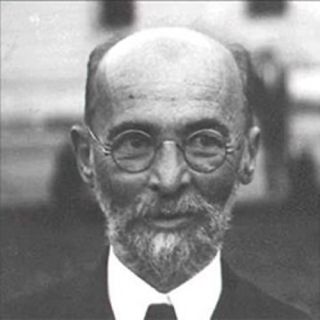Metabolism
The Illuminating Science of Biophotons
Is there a connection between cellular light and mental health?
Posted April 26, 2025 Reviewed by Kaja Perina
Key points
- Cells emit weak light particles called biophotons that form a communication network in our bodies.
- The brain emits more biophotons during neural activity, potentially linking light emissions to consciousness.
- Mental health disorders are associated with oxidative stress which is a primary source of cellular biophotons.
- Mitochondrial dysfunction is associated with mental disorders & biophotons, suggesting new treatment options.
The human body has long been studied through the lens of chemistry and electrical signaling, but an emerging field of research is adding a fascinating new dimension: light. Scientists have discovered that our cells emit tiny flashes of light called biophotons, and these subtle emissions may have profound implications for our understanding of health, consciousness, and particularly mental well-being.
The Light Within Our Cells
Biophotons are extremely weak light particles emitted by all living cells. They're thousands of times weaker than the light from a firefly and invisible to the naked eye, yet they appear to be fundamental to cellular function.
Russian scientist Alexander Gurwitsch first noticed them in the 1920s, and German physicist Fritz-Albert Popp expanded this research in the 1970s, developing sophisticated equipment to detect and measure these elusive emissions.
What makes biophotons particularly intriguing is their apparent coherence. Unlike random light emissions, research suggests they exhibit organization similar to laser light, potentially serving as an ultrafast communication network between cells. Although the claim is controversial and requires more research, Popp's work indicates that our DNA might be both the source and storage medium for this light.
Other potential sources of biophoton emissions include mitochondria, neurotransmitters, and the oxidation of certain amino acids in proteins. Receptors for biophotons within cells include DNA, mitochondria, and the microtubule cytoskeleton.
A New Model of Cellular Communication
Traditional biology recognizes chemical signals and electrical impulses as the primary modes of cellular communication. However, these mechanisms alone struggle to explain the remarkable synchronization observed across billions of cells. Light-based communication could provide an instantaneous coordination system, helping to explain how our bodies maintain coordination across vast cellular networks.
Photons travel at the speed of light and can carry significant information. This could enable cells to share vast amounts of information instantly, without the delays inherent in chemical signaling. This information exchange might be particularly crucial in complex systems like the brain, where precise timing is essential.
Brain Biophotons and Mental Health
The human brain has emerged as a focal point in biophoton research, with several intriguing discoveries. Studies show that the brain emits significantly more biophotons than many other cell types. These emissions increase during neural activity and appear to correlate with brain wave patterns measured by EEG.
The connection to mental health becomes particularly compelling when examining conditions like depression and anxiety. These disorders are consistently linked to oxidative stress, which is an imbalance between the level of harmful reactive oxygen species (ROS) and the antioxidants that neutralize them. This same oxidative process happens to be a primary source of biophoton emissions.
The Mitochondrial Connection
The story deepens when we look at mitochondria, the cellular structures that generate energy. These cellular "power plants" have been implicated in both biophoton production and mental health disorders. Multiple studies have found mitochondrial dysfunction in patients with major depression, bipolar disorder, and schizophrenia.
These same mitochondria may be significant sources of biophotons. This raises an intriguing possibility: could problems with these cellular power generators contribute to mental health conditions partly through disrupted biophoton production or organization?
Therapeutic Implications
If connections between biophotons and mental health exist, this could influence treatment approaches. Light-based therapies (photobiomodulation) already show early promise for depression, anxiety and PTSD. These treatments use specific wavelengths of light to stimulate cellular function, particularly enhancing mitochondrial activity—the same structures implicated in biophoton production.
Mind-body interventions present another promising direction. Practices like meditation may alter biophoton emissions in practitioners, raising fascinating questions about how these ancient practices might work at the cellular level, though this needs further exploration.
Exploring Possibilities
The study of biophotons in relation to mental health represents a frontier where physics meets psychology. While maintaining appropriate scientific skepticism, there's reason for genuine excitement in this emerging field. What seems increasingly certain is that our cells emit light and these emissions change with our health status. Also, our mental states are reflected in biological processes throughout our bodies.
As we continue exploring the complexities of depression, anxiety, and other mental health challenges, understanding the literal light within our cells may show us new pathways for healing and well-being. In doing so, we might bridge the perceived divide between our physical and mental existence, revealing a more integrated picture of human health.
This research reminds us that science still holds wonders to discover - even about the fundamental nature of our own bodies and minds.
References
Allen, J., et al. (2018). Mitochondrial function in major depressive disorder. Frontiers in Neuroscience, 12, 386.
Black, C.N., et al. (2015). Is depression associated with increased oxidative stress? A systematic review and meta-analysis. Psychoneuroendocrinology, 51, 164-175.
Popp, F.A., et al. (1984). Biophoton emission: New evidence for coherence and DNA as source. Cell Biophysics, 6(1), 33-52.
Van Wijk, E.P., et al. (2006). Anatomic characterization of human ultra-weak photon emission in practitioners of transcendental meditation and control subjects. The Journal of Alternative and Complementary Medicine, 12(1), 31-38.







